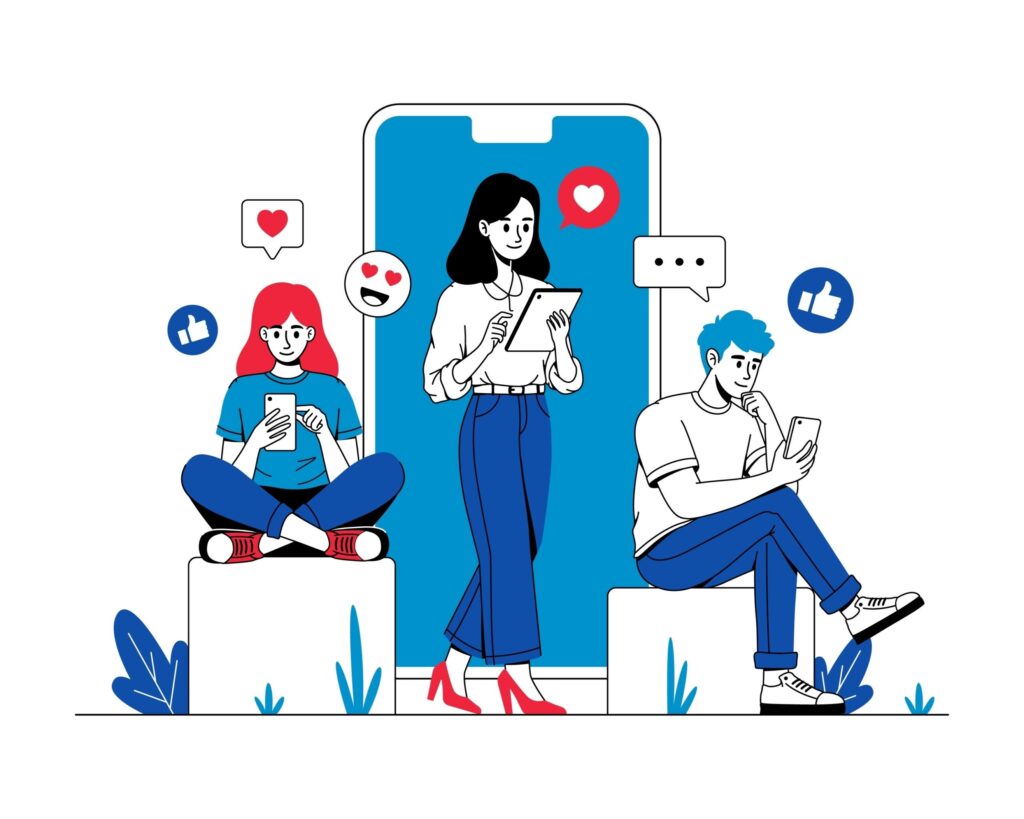Staples has an
Widgets? They’re Easy
Staples has an “Easy” button for you.
In fact, it has several. There’s the one that’s been featured in its print and television ads since 2005. There’s also the one it sells for $4.99 in stores. Hit it and you hear “That was easy!” just like on TV. And there’s the one you can download free as a computer desktop widget. Click it and you’re taken directly to Staples’ online catalog — a time saver for a small business or home office worker looking for supplies. You also can use the widget to check on your Staples Rewards points and get new product alerts automatically via RSS data feeds.
Consumers by the thousands have downloaded the Easy button widget. But more than a handful have asked for something more. They want the sound.
“We’ve had numerous requests from our customers for audio with the downloadable Easy button,” says Catherine Cusack, vice president of brand programs for Staples. “Thousands of people have found the button useful, and this should help make it fun, too.”
“Useful and fun” pretty much sums up the appeal of widgets, which are self-contained snippets of code that can be installed quickly on a computer desktop or personal Web page. They’re often designed to do one, two or a small handful of useful tasks. They’re also meant to be highly entertaining and engaging, and represent an important new way to reach an ever more fragmented online audience.
The earliest widgets were created by independent garage programmers, who made them available to friends or through a Web site. Starting in 2005, Google and Yahoo! began offering entire galleries of them that users could add to their personalized iGoogle or My Yahoo! pages. Yahoo! lists more than 3,800 widgets that are downloadable from its gallery. Google, going its own way and calling them “gadgets,” presents for the taking more than 23,000 of the things.
But the pace of widget innovation has begun to heat up in the past year due in large part to marketers’ interest in social networks, where members commonly use personal pages to showcase their interests. Firms look at the social networking phenomenon as a branding opportunity. Getting even a small number of these evangelists to add a widget with their content, service and sometimes even a logo to a profile page means more brand impressions for very little money. And giving those viewers an easy way to grab the widget and put it on their own page increases that distribution exponentially.
GET YOUR MOTOR RUNNING
The widget strategy is most effective if a brand already fosters a sense of community. When Harley-Davidson wanted to promote the annual Sturgis, SD Bike Week motorcycle rally in August, it asked Interpublic agency Carmichael Lynch Strang to come up with some Web-oriented ideas. What resulted was a Google gadget offering a live feed from the streets of Sturgis during the daylight hours and Sturgis-based interviews with bike designers, Ultimate Fighter, and even Geraldo Rivera at night.
The response was “phenomenal,” says Chris Wexler, interactive media director at Carmichael Lynch. Coverage started Sunday, Aug. 5, and by Tuesday 3,000 of the gadgets had been downloaded from Google. Promotion occurred mainly through seeding mentions on influential biking blogs and Web sites. The widget was featured on Harley’s main Web site as well. It also received a small link in banner ads touting the Sturgis coverage. All told, 25,000 people downloaded the widget that week.
And those users were interacting extensively with the content. “If someone downloaded the widget, he or she would watch on average for 20 minutes a day during the week we were Webcasting,” Wexler says. Usage was so heavy that Google needed to allot additional bandwidth for the live video feed.
The Harley widget was available only for iGoogle personal pages, but Wexler says his agency and Harley are both interested in broadening the scope of future programs — possibly as soon as the next live-feed event, Beach Bike Week in Daytona, FL in February.
BRINGING THE BRAND TO THEM
In a sense, the widget wave is the flip side of the engagement coin. Marketers have moved from simply driving traffic to their Web sites to inducing visitors to stay there longer, soaking up the branding effects. Widgets reverse that tack and move the online brands to where the consumers already are. Particularly for the under-35 demographic, that means social networking pages.
An August study by Nielsen/NetRatings of U.K. Internet users found that Facebook was the fourth-ranked Web site in terms of monthly time spent (on average, 2 hours and 32 minutes). Eurocentric social net Bebo was fifth (2 hours and 15 minutes a month) and MySpace sixth (1 hour and 25 minutes).
“The wide trend at work is the fragmentation of the Internet,” says Ori Soen, CEO of widget platform MuseStorm. “Five or 10 years ago, when people logged on to the Internet, they went to Yahoo! or MSN, large publishers’ or large marketers’ Web sites. That’s all changing. Over the past few years, people have come to spend most of their time on blog sites and social networks. Marketers are finding it harder to reach their audiences or gain new ones because their Web sites are not primary destinations anymore.”
Widgets are a way to reach potential users where they live, Soen adds. Placed within a profile page, they can take advantage of the “trust” effect. Someone visiting a Facebook or MySpace profile probably shares a number of interests. For example, the widget that MuseStorm developed for McCann-Erickson for the October release of Microsoft’s Halo 3 console game was a natural fit for gamers’ own blogs and social pages.
“On the one hand, widgets give users the ability to place what they want where they want — on Facebook, MySpace, their desktops or their mobile phones,” Soen says. “On the other, it lets marketers and publishers package content in a very viral, interactive manner.”
Musestorm and other widget platform companies like Clearspring, SpringWidget (owned by Rupert Murdoch’s News Corp.) and Gydget not only help marketers develop widgets for their content but host and optimize them to fit the standards used by different platforms, as well as measure their spread and use.
Gydget created a widget last spring for the Cincinnati Bengals, the first for a National Football League team. The device loads on fans’ personal pages and links to a season schedule, an RSS news feed of Bengals-related articles and team videos, and to the online store and fan forum on the Bengals’ home site. Andy Ware, the team’s Webmaster and director of new media, says the widget has been downloaded about 6,000 times.
The widget should serve as a means of staying connected with the team’s most loyal fans during the off-season, and Ware plans to measure its use extensively: “I thought it was a unique idea that would spark a lot of interest among our most rabid fans. It was a neat fan-affinity concept and a good way to market ourselves virally and get free advertising.” The Bengals’ record at the time of this writing is 3-7, so the team is anxious to do anything it can to solidify its fan base, Ware says.
MIXING PUSH AND PULL
Web metrics undoubtedly will become more important as widgets move into the online marketing mainstream. Google announced in September that it would make its content pages available to Google Gadget Ads, enabling branded widgets to appear mixed in among the text-based Google ads.
Other companies are bringing the “pull” approach of widgets together with more traditional push marketing. Clearspring announced an ad service in October that lets marketers incorporate downloadable widgets into banner ads, getting around the need to rely on users finding their widgets on the gallery pages of Google, Yahoo! et al., and then gaining 100% viral distribution of those apps. Widget ads like the one Clearspring fashioned to promote the fall launch of the CW show “Gossip Girl” come in standard banner sizes and can be served just about anywhere a banner can be placed.
“The gallery pages haven’t been so effective for discovering widgets because they’re really about searching for something,” says Clearspring senior vice president of sales Peggy Fry. “Clearspring widget ads are a tool that works to reach the Web 2.0 audience in volume.”
Other companies are breaking new ground by integrating widgets into other areas of marketing and promotion. In September, customer management agency Loyalty Lab announced a “Gimme Love” application that links rewards programs to Facebook. Almost immediately, 1-800-Flowers.com an-nounced that it was extending its Fresh Rewards loyalty program into the virtual realm by using the “Gimme Love” widget to let Facebook members sign up and earn reward points for sending virtual bouquets to other members.
Hooking Facebook and, in time, other social networks into a loyalty program only makes sense.
“We see social networking as being one of the trends of the future,” says Lisa Hendrikson, 1-800-Flowers.com’s director of direct and e-mail marketing. “Our loyalty program has about 2 million members. We know some of them are also social networkers. We want to give them a chance to show their loyalty to us in that setting too, and offer them the same rewards for spreading our brand.”






